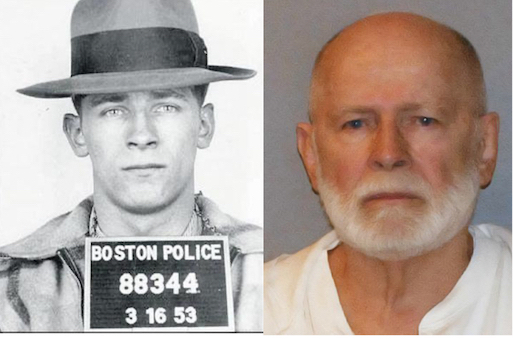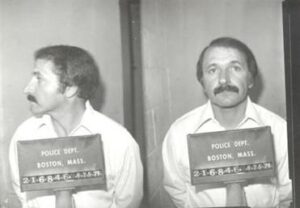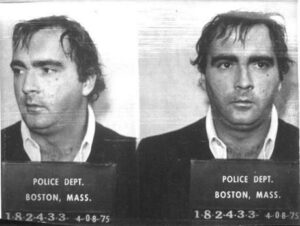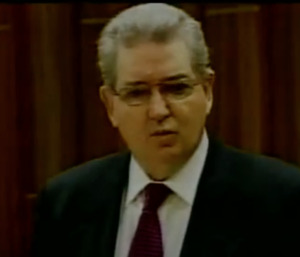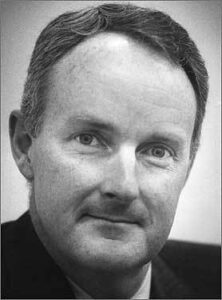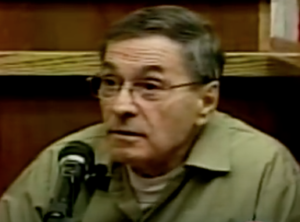For twenty years, Whitey Bulger terrorized Boston with the full collusion of the FBI. On the run for sixteen years, he was eventually arrested on June 22, 2011.
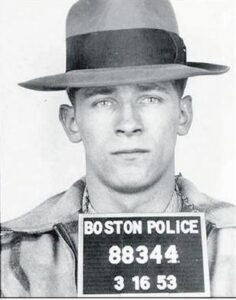
Between the ages of thirteen and eighteen Bulger was arrested ten times, for crimes ranging from larceny, drunk in public and assault and battery. Only once were charges ever pursued to the point of a criminal conviction and even then, Whitey was able to get the charge reduced on appeal. It is no wonder that he developed an arrogant disdain for the criminal justice system and a sense of invulnerability. Unfortunately, this mentality only increased the severity of his transgressions. In May of 1948, Bulger and two accomplices enticed a young female into Whitey’s car and attempted to rape her at a beach in Dorchester. The girl fought back and was kicked to the curb, but not before getting the license plate. All three teens were quickly arrested. Again, Bulger plead guilty to a lesser assault charge, paid a fine and avoided a serious prison term. Within two months, he was arrested again, this time for a drunken assault in a diner that turned into a brawl with the police who showed up to arrest him. Again, he plead guilty to the lesser charge of public drunkenness, paid a modest fine and walked away.
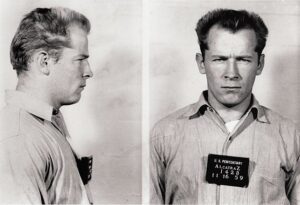
Despite Bill Bulger’s vehement and relentless involvement, including an eleventh hour visit to DC to the Director’s office for an unscheduled, in person request for a last minute reprieve, on November 13, 1959, Whitey was flown commercial, with federal marshals, from Baltimore to San Francisco. From there, in leg irons, he was placed on the small ship that transported him to the center of San Francisco Bay and the Rock. This was an especially isolating development for Whitey for in the late fifties transcontinental flight was a luxury the Bulger family certainly could not afford. He would have to rely on letters only, the occasional visit from his brother or other family members now an impossibility.
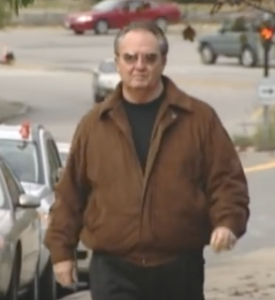
On May 27, 1981. In broad daylight, at a country club in Tulsa, Martorano followed Roger Wheeler to his car in the parking lot and as Wheeler got in Martorano pulled the door open, put a bullet right between Wheeler’s eyes and hopped into a getaway car driven by another Winter Hill mobster. Tulsa investigators quickly determined that criminals from Boston were probably involved, but when they and Oklahoma City FBI agents contacted Boston FBI, they got nowhere.
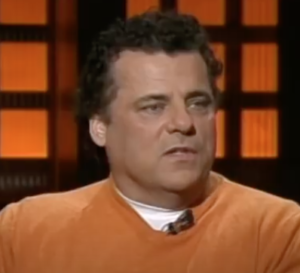
Gradually, even the highest level coke and pot dealers were invited to the upstairs office of the Triple O’s Bar. There, Whitey would be waiting, usually with at least Kevin Weeks, a former bouncer that Whitey took under his wing, gradually relying on him as one of his top enforcers.
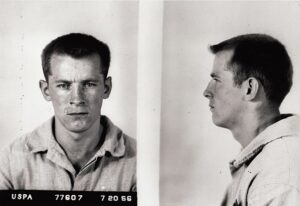
In July of 1956, there was no cushy Club Fed where Whitey could serve out his time in relative penal comfort. Instead, he was sent to the Federal Penitentiary in Atlanta, a huge, forbidding edifice that had housed the likes of Al Capone, Mickey Cohen and Vito Genovese. By comparison Whitey Bulger was a two-bit, bank robber, not exactly intimidating at 5’10”, 150 pounds and other than a few hoodlums back in Boston not particularly well connected. After thirty days of quarantine that was mandatory for every new inmate, Bulger was assigned to one of the eight man cells that comprised most of the tiers of the prison.
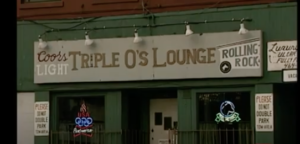
Although Bulger had shot some gangster rivals to death in his early battles with the Mullens, his hands on violence began to ramp up in the late seventies, probably as a result of his newfound power as the most powerful criminal in South Boston. This attitude was evidenced in the matter of Louie Latif, a bookmaker and drug dealer who began to behave erratically, first by murdering several business associates who caught him stealing and then by dealing cocaine. Both behaviors were not only repeatedly unsanctioned by Bulger, Litif also refused to pay rent. Summoned to the upstairs office at Triple O’s, Litif was pointedly warned that he was crossing a very serious line. Litif responded that as long as he and Whitey were friends, he didn’t have a problem. Bulger fixed him with what must have been a terrifying stare and responded, “We’re not friends anymore.”
Podcast: Play in new window | Download
Subscribe: RSS

